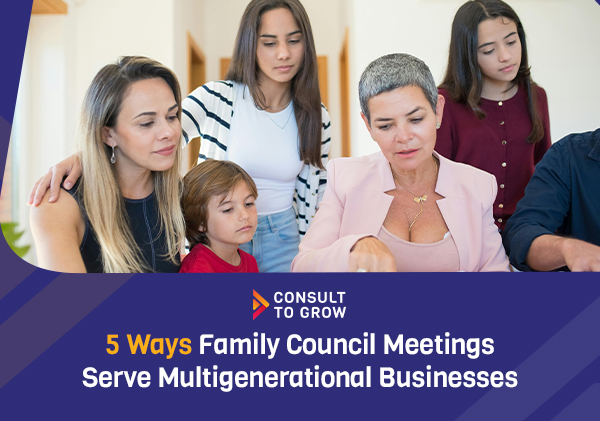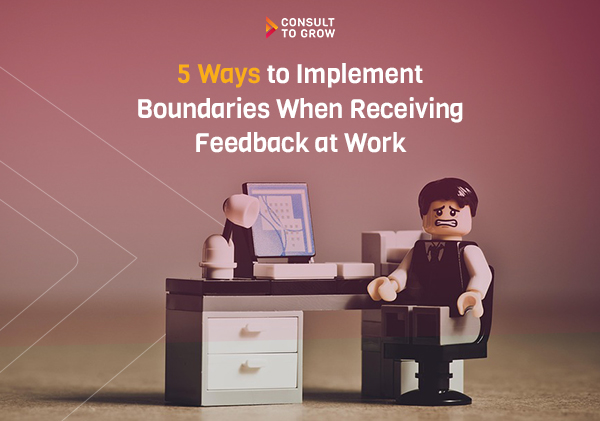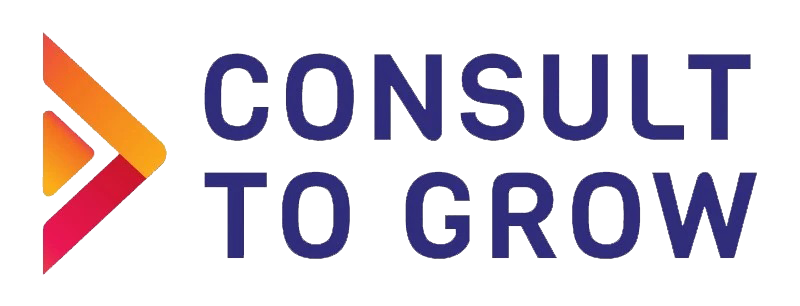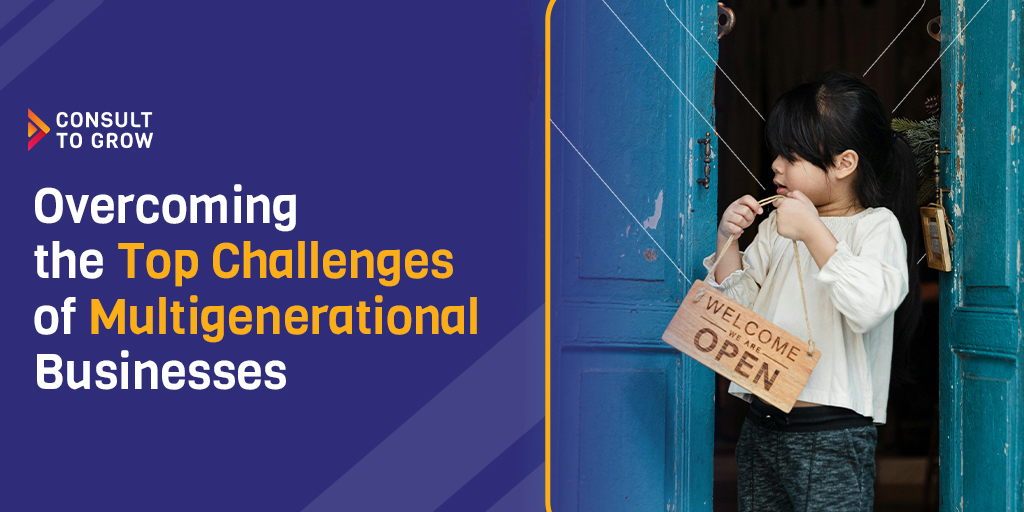
Multigenerational businesses mean a team that spans decades. Each generation comes with its own values, interests, communication style and abilities. Recognizing these differences from the get will benefit your business model by allowing you to adapt your training, structure, benefits and performance management metrics so that all team members are valued for what they offer your business. Let’s take a look at the top challenges multigenerational businesses face as well as solutions for addressing them:
1. Different Generations Prefer Different Communication Methods
While Gen Z is running a group chat in Slack, Baby Boomers prefer their communication to be done face-to-face. Some team members expect an email. Others a ping on the company server.
Solution: Provide Effective Communication Training
Make it the standard that communication happens across multiple platforms, but also provide training to familiarize all team members with all platforms being used.
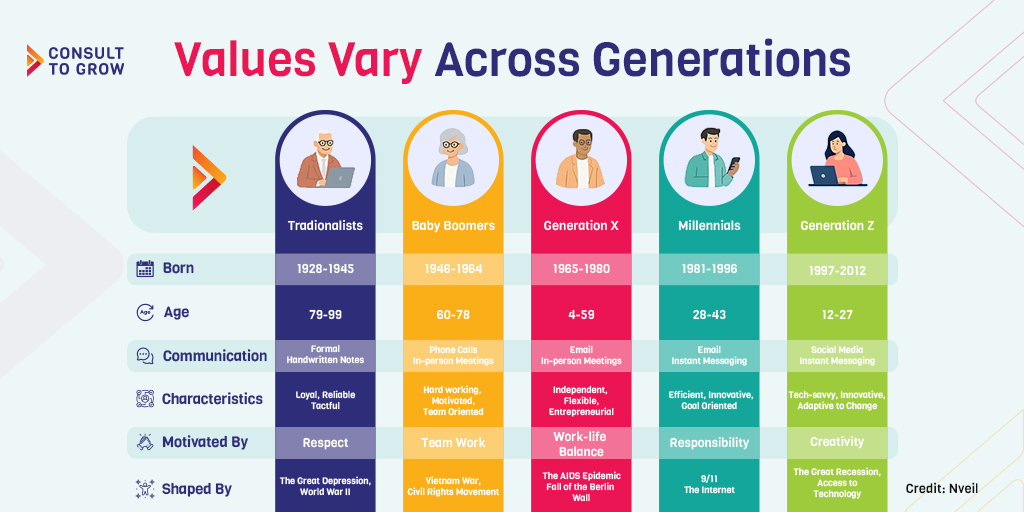
2. Values Vary Across Generations
From Diversity, Equity and Inclusion (DEI) initiatives, equal pay for women, LGBTQIA+ concerns, to eco-considerations such as a company recycling policy, different generations prioritize different concerns. Striking a balance that shows all generations are heard is tricky, but it can be done with some careful considerations.
Solution: Integrate Different Values and Beliefs into the Company Culture
You can do this by implementing mentorship, reverse mentoring, team-building activities, as well a DEI training programs that directly address the generational differences (which include the fundamentals of age inclusivity) across teams. This will create an ongoing culture of respect in your business.
3. Different Generations Have Different Benefit Preferences
Each generation has different needs. Elder generations are frequently taking care of parents. Younger generations want flexible hours. Mid-generations are looking for strong retirement options. Meeting every expectation won’t be possible due to cost, but it is possible to meet in the middle.
Solution: Offer a Wide Variety of Benefits
Many businesses do this with an a la carte menu of benefits that allows team members to opt in or out. This way, team members can prioritize personal preferences, whether it be higher healthcare savings or greater retirement benefits. This also aids in supporting a healthier work/life balance for team members by

4. Technology Adoption Rates Vary Across Generations
While these rates aren’t as drastic as you might think, they can stand in the way of team engagement and collaboration. Some team members will arrive with the necessary skills to adopt new technology. Some will be starting from scratch as new software and applications are introduced. Additionally, the spread of adoption rates across generations is not as clear-cut as expected. There are stereotypes that older generations will be the ones to fall behind in techno-advancement. Recent studies indicate that younger generations are more hesitant to adopt new technologies and may need greater instruction while more established generations have greater understanding and adoption rates. Assessing where team members are and meeting them there will help you build a team that can work together to achieve business goals.
Additional to this is that the variation in adoption rates means there is opportunity in varied knowledge. For example, I (Shawna) handle Consult to Grow’s social media marketing. On a long car ride, I was talking with my 16 year old daughter about the applications I use to plan and publish our social media posts. She had never heard of two of the scheduling platforms I mentioned. As we spoke, she looked at our various feeds: LinkedIn, Instagram, Facebook, and Google. She sighed and said, “I wish your social media appealed to more than just Millenials.”
I have to admit my feelings were hurt, but I was curious. “What do you mean?” I asked her, thinking about how Jamie and I are both, in fact, Millenials, and we may be trapped by limited perspective.
“Well, your posts and images are all for a Millenial audience. You could be reaching different age groups, but you’re not.”
I really appreciated her sharing this with me. I would never have seen it on my own, and we do want to speak directly to other generations.
Solution: Remove Bias from Performance Management Metrics and Make Space for Feedback
But first create a safe environment where team members can request additional assistance in learning. Then recognize that technology adoption is not they only valuable skill on offer in your workplace, and it is not the only one that should be recorded as such. In this Forbes article, Nick Leighton points to how generational stereotypes can inform performance management metrics. As an example of work ethic, he says:
“If a company universally measures work ethic based on the number of hours in an office, younger generations that prefer a flexible schedule or intermittent work hours could be unfairly measured as less effective.”
Also make it safe for team members to share knowledge they possess that can benefit the business to remove or address gaps in the way the business is functioning. While my daughter wasn’t a team member, her feedback was appreciated, and we had her send in a proposal sharing what she saw and how she felt she could support Consult to Grow® in addressing our social media gap.
Building a Business that Lasts
Learning how to manage your team means learning how to meet their needs. By implementing training that acknowledges differences in background while stripping away punitive bias in performance metrics, you begin the work of creating a company that rewards team members for what they bring, encouraging them to bring more. Additionally, allowing for a variety of benefits to meet the variety of needs means you see your team where they are and you recognize their value. Together, this builds up your company culture in to something all generations can be proud to continue contributing to.

